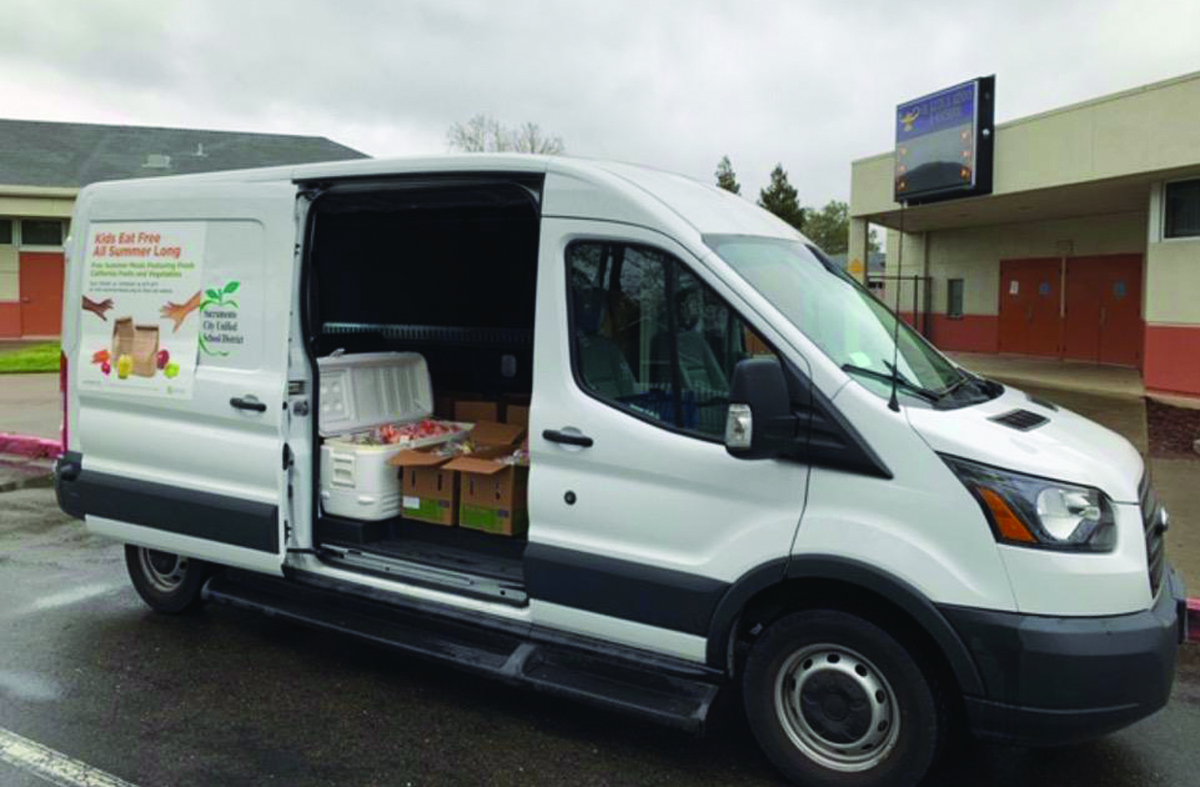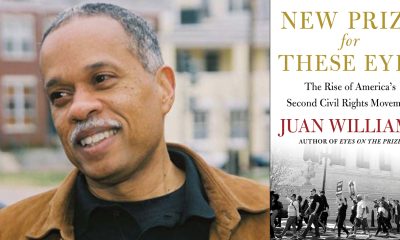Bay Area
Hit By Coronavirus Crisis, School Districts Call Time-out: Still Providing Meals

By Sunday evening, more than 720 of the state’s 1,000 school districts announced they were closing beginning Monday. They made the decision out of an abundance of caution for the health and safety of students, parents and staff and with the intent of sharing responsibility with the broader community in an effort to slow the spread of the coronavirus.
Then, on Monday, county health officials put more than 6.7 million Californians in six Bay Area counties under a “shelter in place” order that instructed residents to stay isolated in their homes and away from public places and human interaction as much as possible.
The directive, which took effect Tuesday at 12:01 am and lasts at least through April 7, affects San Francisco, Santa Clara, San Mateo, Marin, Contra Costa and Alameda counties.
The closures are scheduled to last between two to four weeks.
In all, more than 95 percent of public school students in 41 of 58 counties will be impacted. Many of the school districts that California’s 334,652 African-American students attend have announced they will be closed.
Outside California, more than 33 states, plus the District of Columbia and Puerto Rico, have announced plans to close schools for two or three weeks.
Most of the announcements of school district closings happened on Friday, closely following the closure announcement by the two largest school districts in the state – Los Angeles Unified and San Diego Unified.
Los Angeles superintendent Austin Buetner and Cindy Marten, San Diego superintendent, issued a joint statement that read, “California has now entered a critical new phase in the fight to stop the spread of the COVID-19 pandemic. There is evidence the virus is already present in the communities we serve, and our efforts now must be aimed at preventing its spread. We believe closing the state’s two largest school districts will make an important contribution to this effort.”
Before deciding to close their schools, the districts consulted with their county offices of education and their public health departments. Many school leaders were concerned about interrupting student learning and the negative effect closures would have on the families that depend on schools to provide meals and other essential social services.
Inglewood Unified was one of the school districts making the decision to close on Friday. With a student body that is 40 percent African American, among districts with over 2,000 students, Inglewood has the largest percentage of Black students in the state. Los Angeles Unified with 8.4 percent and Oakland Unified with 24 percent respectively have the largest number of African-American students.
Dr. Erika Torres, Inglewood’s County Administrator, said she decided to close the district’s schools because, “We are concerned about the health, safety and well being of our students and families.”
“I wanted to make sure that we were very proactive in this decision,” she said.
Like many of the school districts that are closing, Inglewood has no reported cases of coronavirus among students or staff.
Even as California banned large public gatherings, Governor Newsom resisted taking steps at the state level to close schools. On Sunday, Newsom defended his approach saying, “I know for a fact that not all these districts have planned for the needs of these kids next week, and I’m deeply concerned about their health and I’m deeply concerned about their safety and I’m deeply concerned about their parents’ inability to go to work and many of those parents work in hospitals, work as firefighters, work as paramedics, work as the people that would get in gear to help us advance the mobile testing (for the virus) throughout the state.”
While school leaders were deciding to close schools last Friday, the U.S. Department of Education said it would consider waiving requirements for statewide tests that are mandated for grades 3-8 and high school. With testing set to start during the spring, it may not be feasible for districts to administer the tests if school closures are extended.
On Friday, Newsom signed an executive order announcing that California schools that close due to the coronavirus outbreak will continue to receive funding, on condition that dollars are directed toward remote learning opportunities and childcare options during workday hours. For school districts like Inglewood Unified and Oakland Unified that are paying off state loans and Los Angeles Unified, which is experiencing budget issues, the governor’s action relieves some of the fiscal strain of closing schools.
Given the rapidly changing nature of the coronavirus outbreak and CDC’s guidance, what school districts decide to do after closing for two to four weeks is in flux. It is important for all parents and students to check their District websites for updated information and follow directives from the California Department of Public Health.
Activism
Oakland Post: Week of May 21 – 27, 2025
The printed Weekly Edition of the Oakland Post: Week of May 21 – 27, 2025

To enlarge your view of this issue, use the slider, magnifying glass icon or full page icon in the lower right corner of the browser window.
Bay Area
Chevron Richmond Installs Baker Hughes Flare.IQ, Real-time Flare Monitoring, Control and Reduction System
While the sight of flaring can cause concern in the community, flares are essential safety systems that burn pollutants to prevent them from being released directly into the atmosphere. They activate during startup and shut-down of facility units or during upsets or equipment malfunctions. The typical flare stack is about 200 feet high so that vapors are well above street levels.

The Richmond Standard
Chevron Richmond recently installed flare.IQ, a real-time, automated system that will improve the facility’s flaring performance.
The technology, developed by Panametrics, a Baker Hughes business, uses sensors to monitor, reduce and control flaring in real time. It collects and assesses data on refinery processes, such as temperature, pressure, gas flow and gas composition, and adjusts accordingly to ensure flares burn more efficiently and cleanly, leading to fewer emissions.
“The cleaner the flare, the brighter the flame can look,” said Duy Nguyen, a Chevron Richmond flaring specialist. “If you see a brighter flame than usual on a flare, that actually means flare.IQ is operating as intended.”
While the sight of flaring can cause concern in the community, flares are essential safety systems that burn pollutants to prevent them from being released directly into the atmosphere. They activate during startup and shut-down of facility units or during upsets or equipment malfunctions. The typical flare stack is about 200 feet high so that vapors are well above street levels.
“A key element in Baker Hughes’ emissions abatement portfolio, flare.IQ has a proven track record in optimizing flare operations and significantly reducing emissions,” said Colin Hehir, vice president of Panametrics, a Baker Hughes business. “By partnering with Chevron Richmond, one of the first operators in North America to adopt flare.IQ, we are looking forward to enhancing the plant’s flaring operations.”
The installation of flare.IQ is part of a broader and ongoing effort by Chevron Richmond to improve flare performance, particularly in response to increased events after the new, more efficient hydrogen plant was brought online in 2019.
Since then, the company has invested $25 million — and counting — into flare minimization. As part of the effort, a multidisciplinary refinery team was formed to find and implement ways to improve operational reliability and ultimately reduce flaring. Operators and other employees involved in management of flares and flare gas recovery systems undergo new training.
“It is important to me that the community knows we are working hard to lower emissions and improve our flaring performance,” Nguyen said.
Also evolving is the process by which community members are notified of flaring incidents. The Community Warning System (CWS), operated by Contra Costa County is an “all-hazard” public warning system.
Residents can opt-in to receive alerts via text, e-mail and landline. The CWS was recently expanded to enable residents to receive notifications for “Level 1” incidents, which are considered informational as they do not require any community action.
For more information related to these topics, check out the resources included on the Chevron Richmond, CAER and Contra Costa Health websites. Residents are also encouraged to follow @chevronrichmond and @RFDCAOnline on Facebook and X (formerly Twitter), where additional information may be posted during an incident.
Activism
Oakland Hosts Town Hall Addressing Lead Hazards in City Housing
According to the city, there are 22,000 households in need of services for lead issues, most in predominantly low-income or Black and Latino neighborhoods, but only 550 to 600 homes are addressed every year. The city is hoping to use part of the multimillion-dollar settlement to increase the number of households served each year.

By Magaly Muñoz
The City of Oakland’s Housing and Community Development Department hosted a town hall in the Fruitvale to discuss the efforts being undertaken to remove lead primarily found in housing in East and West Oakland.
In 2021, the city was awarded $14 million out of a $24 million legal settlement from a lawsuit against paint distributors for selling lead-based paint that has affected hundreds of families in Oakland and Alameda County. The funding is intended to be used for lead poisoning reduction and prevention services in paint only, not water or other sources as has been found recently in schools across the city.
The settlement can be used for developing or enhancing programs that abate lead-based paint, providing services to individuals, particularly exposed children, educating the public about hazards caused by lead paint, and covering attorney’s fees incurred in pursuing litigation.
According to the city, there are 22,000 households in need of services for lead issues, most in predominantly low-income or Black and Latino neighborhoods, but only 550 to 600 homes are addressed every year. The city is hoping to use part of the multimillion-dollar settlement to increase the number of households served each year.
Most of the homes affected were built prior to 1978, and 12,000 of these homes are considered to be at high risk for lead poisoning.
City councilmember Noel Gallo, who represents a few of the lead-affected Census tracts, said the majority of the poisoned kids and families are coming directly from neighborhoods like the Fruitvale.
“When you look at the [kids being admitted] at the children’s hospital, they’re coming from this community,” Gallo said at the town hall.
In order to eventually rid the highest impacted homes of lead poisoning, the city intends to create programs and activities such as lead-based paint inspections and assessments, full abatement designed to permanently eliminate lead-based paint, or partial abatement for repairs, painting, and specialized cleaning meant for temporary reduction of hazards.
In feedback for what the city could implement in their programming, residents in attendance of the event said they want more accessibility to resources, like blood testing, and information from officials about lead poisoning symptoms, hotlines for assistance, and updates on the reduction of lead in their communities.
Attendees also asked how they’d know where they are on the prioritization list and what would be done to address lead in the water found at several school sites in Oakland last year.
City staff said there will be a follow-up event to gather more community input for programming in August, with finalizations happening in the fall and a pilot launch in early 2026.
-

 #NNPA BlackPress3 weeks ago
#NNPA BlackPress3 weeks agoMLK Bust Quietly Removed from Oval Office Under Trump
-

 Activism3 weeks ago
Activism3 weeks agoOakland Post: Week of May 7 – 13, 2025
-

 Activism3 weeks ago
Activism3 weeks agoOakland Post: Week of April 30 – May 6, 2025
-

 #NNPA BlackPress3 weeks ago
#NNPA BlackPress3 weeks agoTrump Abruptly Fires First Carla Hayden: The First Black Woman to Serve as Librarian of Congress
-

 Activism1 week ago
Activism1 week agoNew Oakland Moving Forward
-

 Activism1 week ago
Activism1 week agoAfter Two Decades, Oakland Unified Will Finally Regain Local Control
-

 #NNPA BlackPress3 weeks ago
#NNPA BlackPress3 weeks agoBlack America Celebrates African Descent Heritage of Pope Leo XIV
-

 Alameda County1 week ago
Alameda County1 week agoOakland Begins Month-Long Closure on Largest Homeless Encampment























































